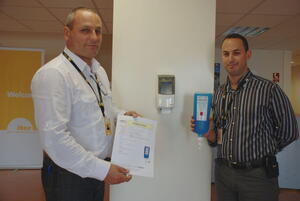Hand washing: an easy way to prevent infection
Hand washing: An easy way to prevent infection
Most people do it without thinking. Yet hand washing, when done properly, is one of the best ways to avoid getting sick. This simple habit requires only soap and warm water, antimicrobial toilettes, or an alcohol-based hand sanitizer. Throughout the day, germs accumulate on your hands from a variety of sources—direct contact with people, contaminated surfaces, foods, even animals and animal waste. If you don't wash your hands frequently enough, you can infect yourself with these germs by touching your eyes, nose or mouth. And you can spread these germs to others by touching them or by touching surfaces that they also touch, such as doorknobs. Antibacterial soaps have become increasingly popular in recent years, however these soaps are no more effective at killing germs than regular soap. What's more, using antibacterial soaps may lead to the development of bacteria that are resistant to the products' antimicrobial agents—making it even harder to kill these germs in the future.
That is why recently cleaning gels for fast hand hygiene were installed in all meeting rooms, cafeterias and at the main entrance of all ITER buildings.
Follow these instructions for washing with soap and water:
Wet your hands with warm, running water and apply liquid soap or use clean bar soap. Lather well. Rub your hands vigorously together for at least 15 seconds. Scrub all surfaces, including the backs of your hands, wrists, between your fingers and under your fingernails. Rinse well! Dry your hands with a clean or disposable towel. Use a towel to turn off the faucet.
Follow these instructions for using an alcohol-based hand sanitizer: Apply about 1/2 teaspoon of the product to the palm of your hand. Rub your hands together, covering all surfaces of your hands, until they're dry.


